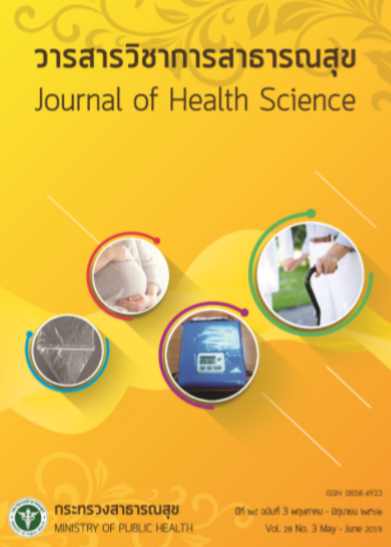Effectiveness of a Intubation Weaning Protocal for Invasive Mechanical Ventilated Newborns in Neonatal Intensive Care Unit. Nakhon Phanom Provincial Hospital
Keywords:
intubation, newborn, weaning protocol, intensive care unitAbstract
The objective of this study was to evaluate the effectiveness of a protocol for weaning of ventilator. It was conducted as a quasi-experimental research during November 2016 to October 2017. The samples were invasive mechanical ventilated newborn patients with acute respiratory failure, who had gestational age of 28 weeks with body weight 1,000 grams and above admitted in the neonatal intensive care unit of Nakhon Phanom Hospital. They were divided into 2 groups: the experimental group (46 patients) who were managed with the new weaning protocol; and the control group (21 patients) who were with the standard protocol. The variables to be compared included the duration of weaning from invasive mechanical ventilation (IMV), the duration from the start of weaning to extubation, the duration of intubation and the complications from the mechanical ventilation. Data were analyzed by using t test, exact probability test, multivariable risk different regression, multivariable risk ratio regression and generalized lineal regression model. It was found that the 2 groups were similar in term of general characteristics, However, they was significant difference on percentage of shock (p=0.018) and birth asphyxia (p=0.032). As for the effectiveness assessment, the new weaning protocol was found to reduce the duration of weaning up to 6.2 hours (p=0.001), reduces duration from the start of weaning to extubation for 10.7 hours and reduces duration of intubation for 16.1 hours compared to those of the standard weaning protocol (p=0.001). Reduction of complication was also observed, 0.18 time (p=0.056). The was no case of re-intubation in both groups.
Downloads
Downloads
Published
How to Cite
Issue
Section
License
Copyright (c) 2019 Journal of Health Science - วารสารวิชาการสาธารณสุข

This work is licensed under a Creative Commons Attribution-NonCommercial-NoDerivatives 4.0 International License.







